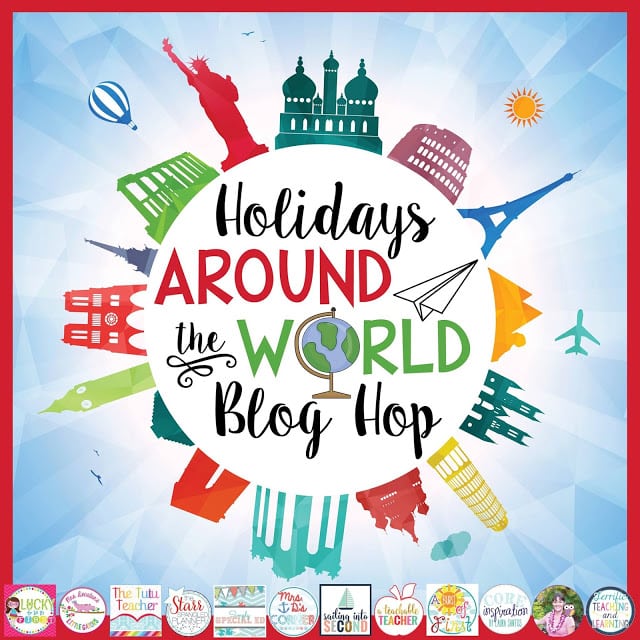
You have discovered a teaching treasure if you are reading this post. Twelve of my blogging buddies are coming together to bring you the ultimate classroom resource for the holidays. After you hop to each of our blogs, you will have a collection of freebies and a wealth of information that will allow you to take your students on a holiday journey around the world. This stop on the hop is all about Christmas in Portugal.

Modern day Portuguese Christmas celebrations are similar to celebrations in the UK and USA with a few notable differences linked to the religiously-rooted origins of the holiday. Here are a few of the most celebrated traditions:
Presepios
Elaborate nativity scenes (called Presépios) are displayed in churches, households, shops and restaurants during the months of December and early January. Life sized scenes are not uncommon in larger towns where people travel from miles around to catch a glimpse of these elaborate works of art. Today, families continue the tradition of displaying a Presépio in their house along with the more modern decoration of a Christmas tree.
On the way out the door to midnight mass, parents secretly add the Baby Jesus to the Presépio so he is present when the excitedly children return home in hopes he will be there. His presence in the scene signals the delivery of gifts.
Pai Natal
Pai Natal (known as Father Christmas or Santa Claus in the United States) is a more modern Portuguese Christmas icon. Children write letters to Pai Natal who lives in the cold north and has small animals that help him prepare for the delivery of gifts on his sleigh.
Gifts
Traditionally, Portuguese families celebrated the delivery of gifts from the newborn Jesus. Modern day celebrations include the delivery of gifts by Pai Natal with help from the Baby Jesus on Christmas Eve. Gifts are left under the Christmas tree or, in more traditional homes, left in shoes by the fireplace and opened after returning home from Christmas mass, called “Missa do Galo” or “Mass of the Rooster.
Favorite treats like candied fruits and sweet bread were given to each member of the family in the past. Today, these treats are typically delivered as gifts to neighbors and enjoyed as desserts during the holiday season. Modern day gift giving includes a variety of clothes, toys, and tools.
Consoada
This traditional meal of Bacalhau (codfish), green vegetables, and boiled potatoes, is enjoyed before heading to church.
In the center of the beautifully decorated table is a traditional round Christmas cake called “Bolo Rei” (King Cake). A fava bean is hidden within the cake along with a small trinket. Whoever finds the bean is considered the king and must bake Bolo Rei to be given to the lucky person who finds the trinket.

I have yet to find a wealth of text written in English for elementary students about Christmas celebrations in Portugal. Therefore, I have included a nonfiction information page along with comprehension activities in my freebie Christmas In Portugal Activity Pack.
I also encourage you to add the book O Dia Louco Do Pai Natal (The Crazy Day of Father Christmas) by Dominique Curtiss to your classroom library. Due to the fact that none of my students fluently read Portuguese, I plan to introduce this in the same way I would a wordless picture book. Students will analyze the pictures carefully, make inferences about what is happening in the story, and complete the comprehension activities outlined below.

Nonfiction Comprehension Check
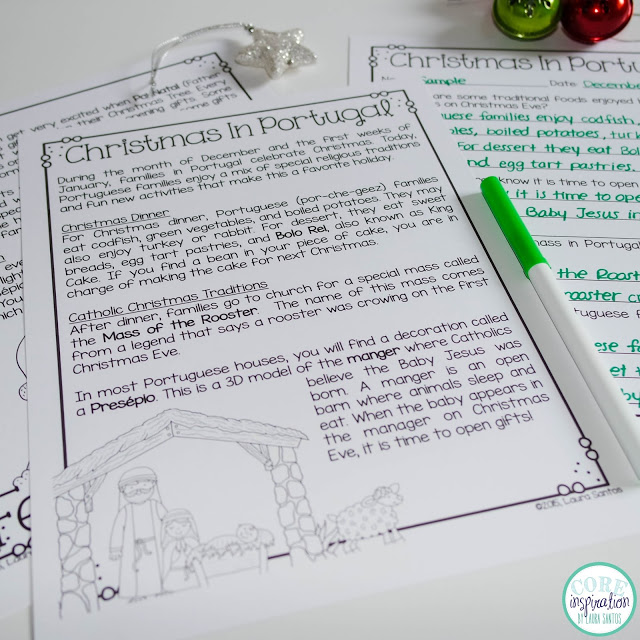
Christmas In Portugal. You can check their reading comprehension as they complete the 7 related comprehension questions. These questions require understanding of information within the text as well as application of information to answer questions beyond the text.
Compare and Contrast
Making Inferences
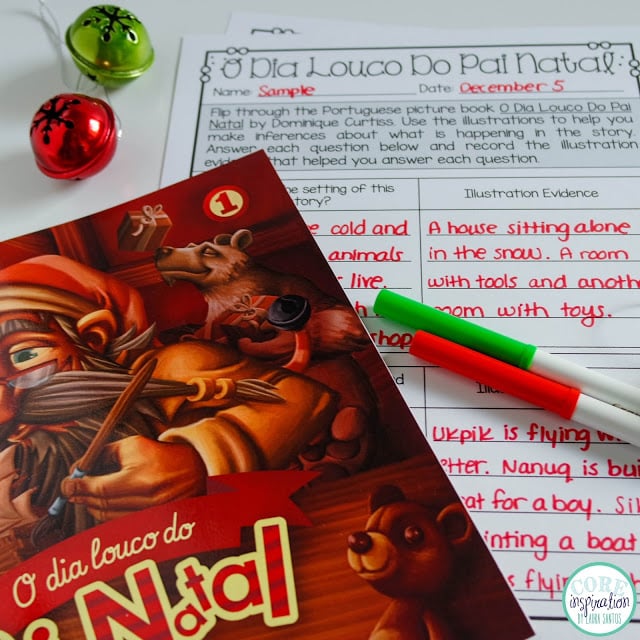
After reading O Dia Louco Do Pai Natal by Dominique Curtiss, have your students make inferences about the characters, setting, and plot of the story. This picture book is writing in Portuguese so you will likely have to “read” it in the same way you would a wordless picture book. Each inference question also requires your young readers to collect illustration evidence to support their inference.

All the activities outlined above are included in my Christmas In Portugal Activity Pack. If you plan on incorporating these activities with others you find on this Holidays Around The World Blog Hop, take a moment to download the Portugal Passport page. The passport booklet that results from collecting all twelve passport pages is a perfect way to bring together the knowledge your students can collect during your Holidays Around The World unit of study.

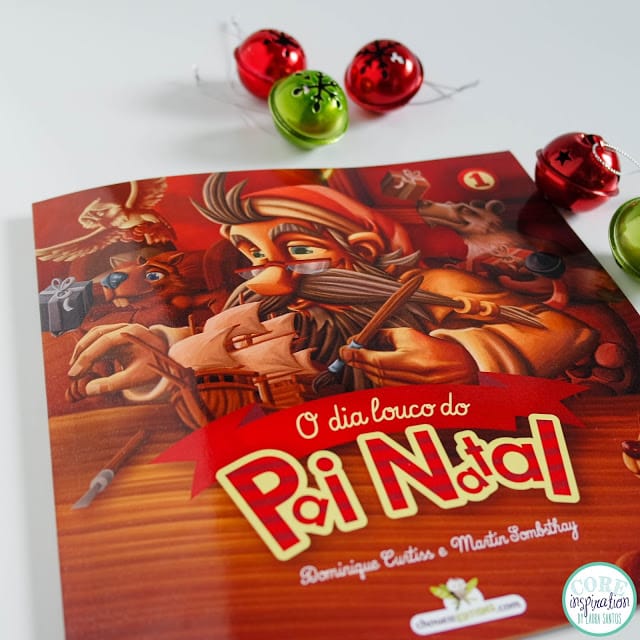
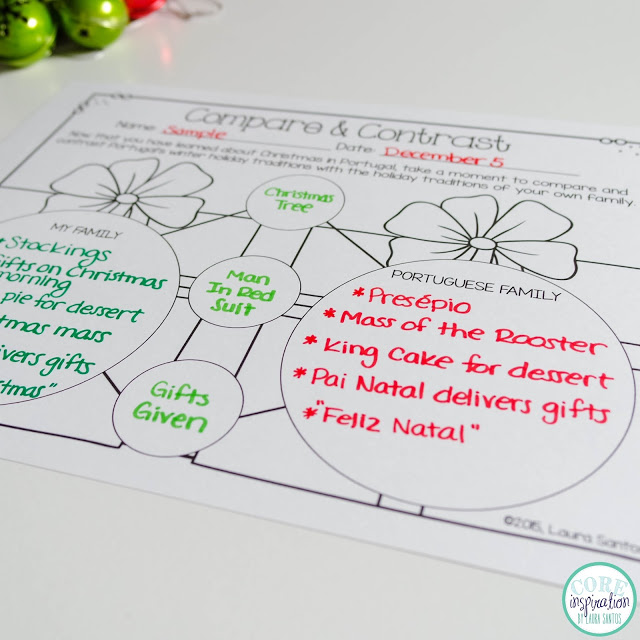
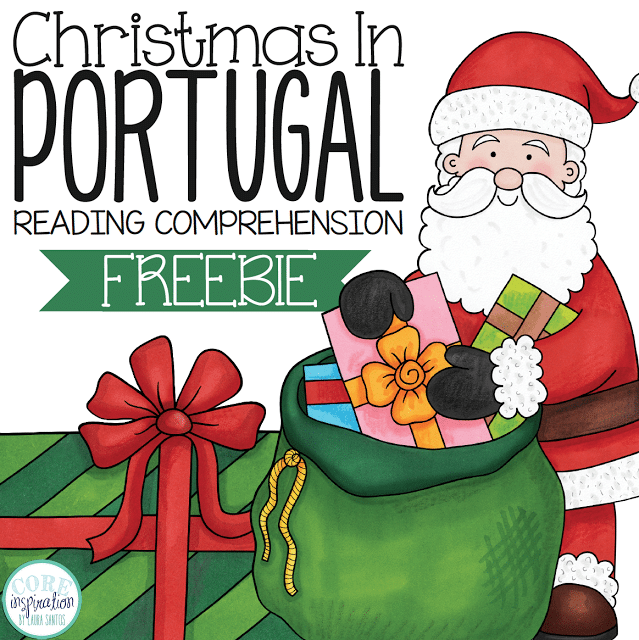





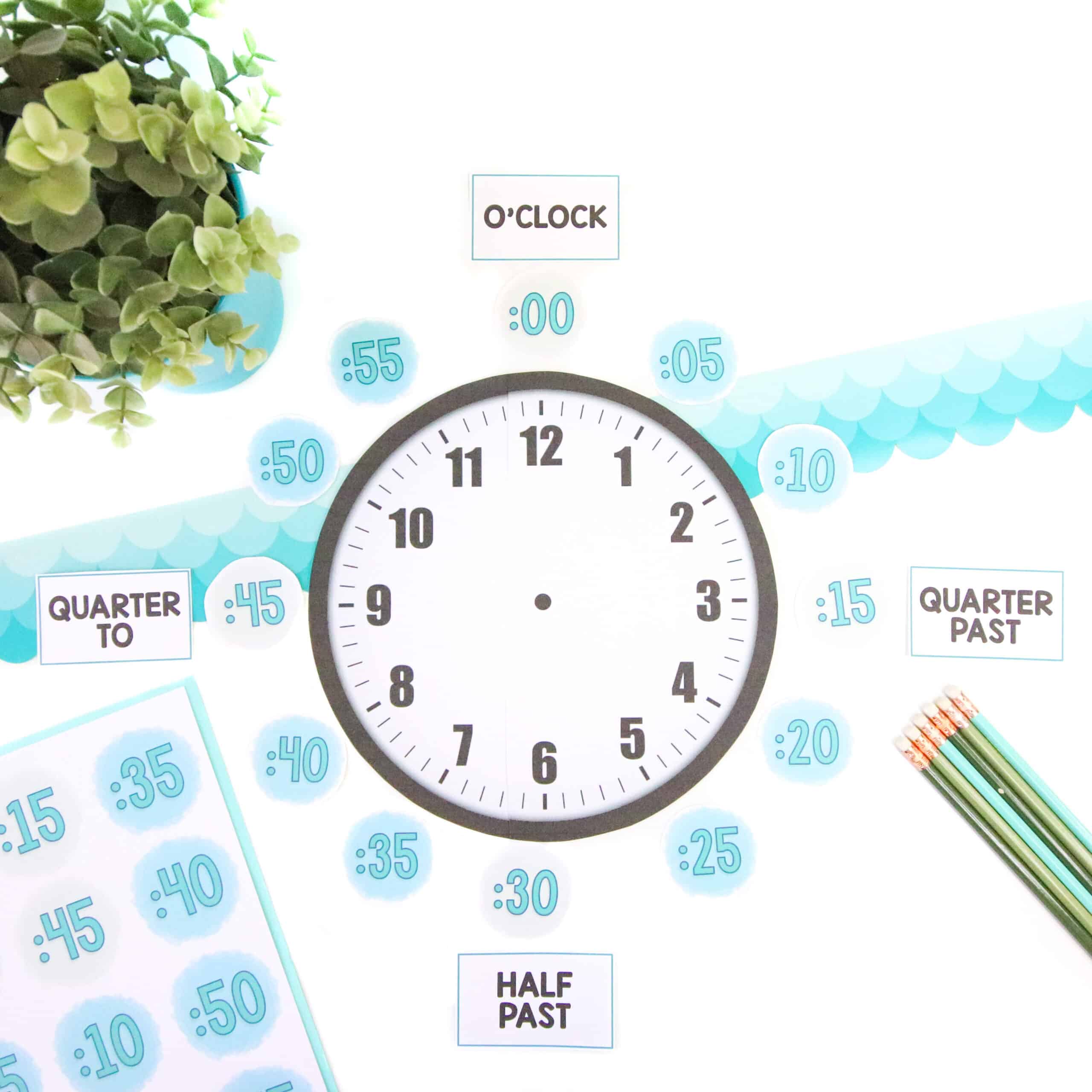
15 Responses
Laura, this post is fabulous! I've honestly never included Portugal in my Holidays Around the World unit but I definitely am this year! Your freebie looks GREAT! Thanks so much for joining us!
Destiny
Terrific Teaching and Learning
Thank you Destiny! So happy to hear you will be adding a new country to your unit.
Cheers!
Laura
Your graphic organizer is ADORABLE!! Everything you do is top notch. 😉
Thanks for sharing!
Lauren
A Teachable Teacher
Lauren, receiving a compliment from you makes my day. 🙂 Thank you so much!
That book looks like it is chalk full of amazing photos to share with students, even if it isn't in English! I might just need to add it to my holiday book collection!
I love the reading passage and graphic organizers too… they will be great for teaching my students all about how people in Portugal celebrate during the holiday season!
Stephanie
The illustrations are definitely what caught my eye and inspired me to take the wordless picture book approach to reading.
I love all of the fun book recommendations {and freebies too!} I'm picking up on this hop! Thanks so much for sharing!
Slainte,
☘ Molly
Lucky to Be in First
Thanks for hopping by Molly. I am so glad this project introduced me to your blog…I absolutely love how you present your ideas!
I like the idea of reading a book in another language as a wordless picture book! How fun 🙂 Thanks for sharing. 🙂
Thanks Katie. I had to get a little creative when I discovered there was a lack of Portuguese Christmas books translated into English. 🙂
Wow! That looks like a beautiful book! I really appreciate your reading passages, Laura… it is often difficult to find good resources for other countries!
Thanks so much! 🙂
~Erin
Mrs. Beattie's Classroom
I am the new one
Hi Laura!
First of all, I wish you a Happy New Year 2016 and wish you and your students to have lots of fun with reading plenty of books this year!
I am so pleased that my book: "O dia louco do Pai Natal" pleased you and you could work with your students. This book is the first volume 1 out of the 3 ones. But the whole story is also gathered in one book: "As aventuras do Pai Natal". It has been translated into English "The adventures of santa Claus", Spanish, german and French which is my native language.
I hope you will enjoy discovering some of my other books in the future.
Have a nice day!
Best regards,
Dominique Curtiss.
https://desmotspourever.blogspot.ca
Dominique,
What an honor to have you comment on this post! I am thrilled to hear it is available in English. Can you attach the link so my readers and I can locate the English edition? Thanks for your support!
Laura Santos
Your post really cool and interesting. Thanks very much. vakantiewoning Portugal